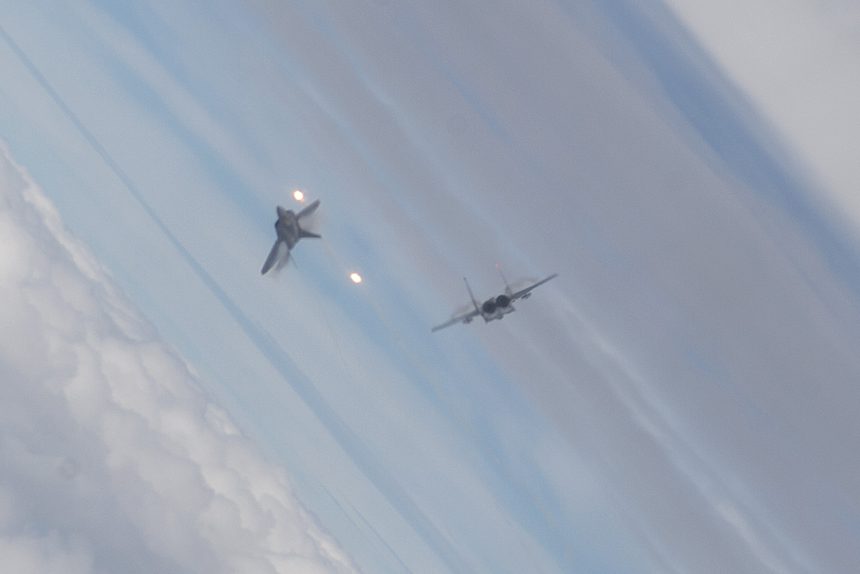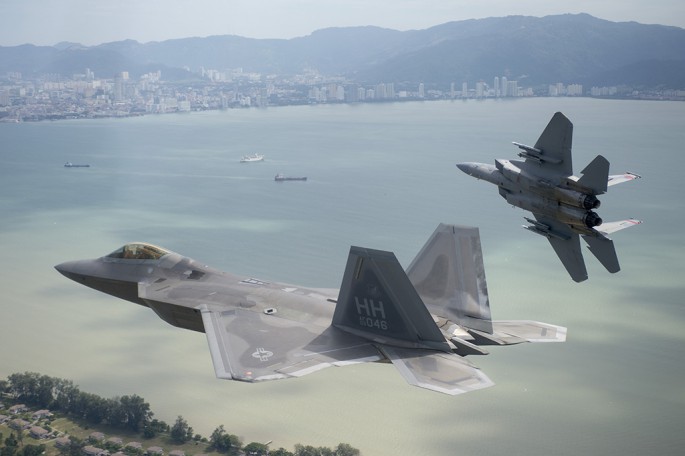Aerial combat between U.S. Air Force F-22 Raptors and F-15 Eagles, seen from the inside.
The image in this post was taken from a U.S. Air Force F-15 Eagle from the 131st Fighter Squadron, 104th Fighter Wing, Barnes Air National Guard Base, Massachusetts, during a close range aerial combat exercise against a U.S. Air Force F-22 Raptor from the 154th Wing, Joint Base Pearl Harbor-Hickam, Hawaii.
You can clearly see the two planes maneuvering at very close range, pulling Gs, with the F-22 releasing flares counter measures against (simulated) heat seeking air-to-air missiles.
The dogfight took place off the coast of Penang, Malaysia, Jun. 16, 2014, during “Cope Taufan 2014” a biennial LFE (large force employment) exercise taking place June 9 to 20 designed to improve U.S. and Malaysian combined readiness.
Both aircraft are currently deployed to Royal Malaysian Air Force P.U. Butterworth, Malaysia.
The exercise, that marks the F-22’s first deployment to Southeast Asia, featured also some interesting mixed formation between U.S. planes with Royal Malaysian Air Force MIG-29N Fulcrum, Su-30 and F-18 Hornet jets.
Image credit: U.S. Air Force
It’s not clear whether the F-22 has flown DACT (Dissimilar Air Combat Training) against Malaysian Migs or Sukhois; if this is the case, it would be interesting to know which ROE (Rules Of Engagement) were applied and the outcome of the confrontations between the Russian multirole planes and the U.S. most advanced fighters.


















